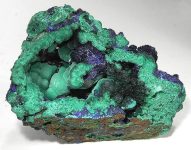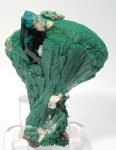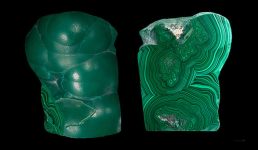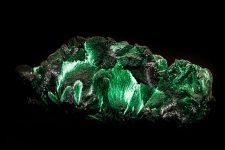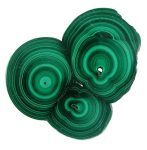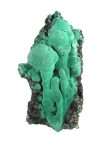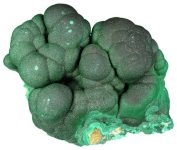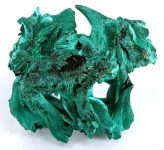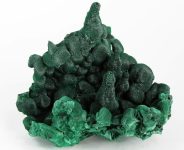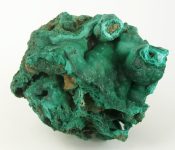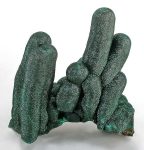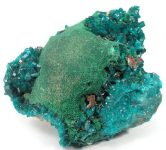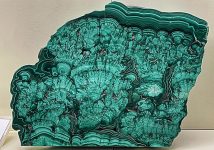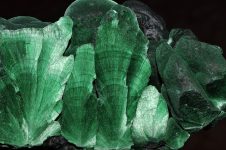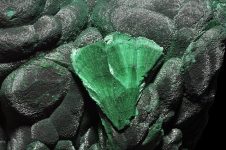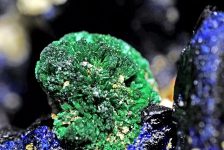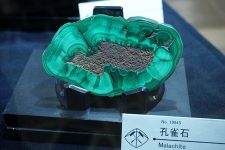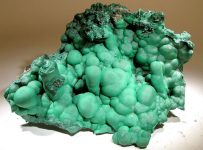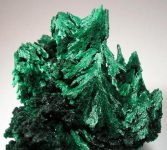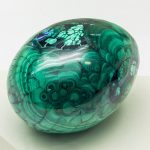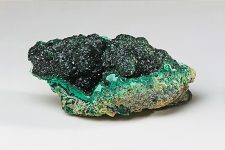Malachite
ABOUT MALACHITE
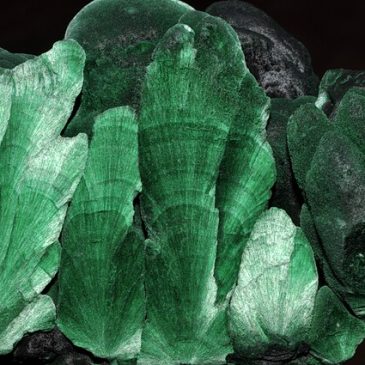
About: Malachite is a vibrant green copper carbonate hydroxide mineral known for its striking banded patterns and rich color. It has been used for thousands of years as a gemstone, ornamental stone, and pigment. This guide provides an in-depth look at malachite’s characteristics, history, sources, uses, and significance.
Mining: Malachite is typically extracted through open-pit or underground mining. The extraction process involves drilling, blasting, and removing the ore, which is then transported to processing facilities.
Processing: Extracted malachite is cleaned, cut, and polished to enhance its natural beauty. For use as a pigment, malachite is ground into a fine powder.
CHARACTERISTICS
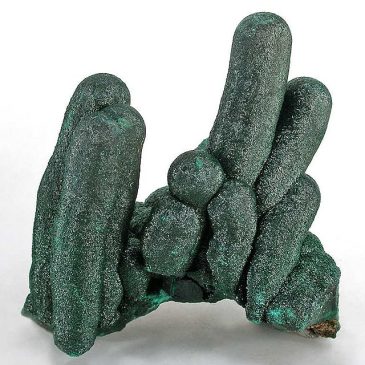
Color: Malachite is typically bright green to dark green, often with distinctive banded patterns in lighter and darker shades.
Chemical Composition: Malachite has the chemical formula Cu₂(CO₃)(OH)₂.
Density: Malachite has a density of about 3.6-4.0 g/cm³, making it relatively dense.
Crystal Structure: Malachite crystallizes in the monoclinic system, forming botryoidal, fibrous, or stalactitic masses. Crystals are rare but can be found in prismatic or needle-like forms.
Luster: Malachite has a silky to adamantine (diamond-like) luster when polished, and a dull to earthy luster in its natural state.
Hardness: Malachite has a Mohs hardness of 3.5 to 4, making it relatively soft and prone to scratching.
Transparency: Malachite is typically opaque, although thin slices can be translucent.
HISTORY AND LORE
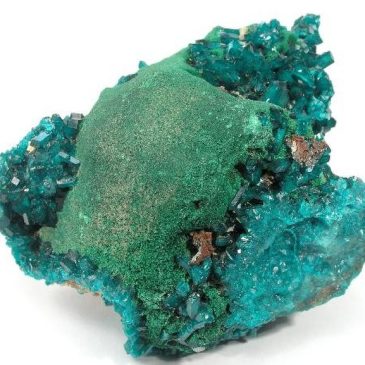
Ancient Civilizations: Malachite has been known and used since ancient times. The ancient Egyptians mined malachite in the Sinai Peninsula and used it as a gemstone, pigment, and in amulets. The Greeks and Romans also valued malachite for jewelry and decorative objects.
Middle Ages: During the Middle Ages, malachite was used as a protective stone, believed to ward off evil spirits and enhance well-being.
Modern Era: Today, malachite remains popular for its beauty and metaphysical properties. It is widely used in jewelry, decorative objects, and as a collector’s mineral.
SOURCES
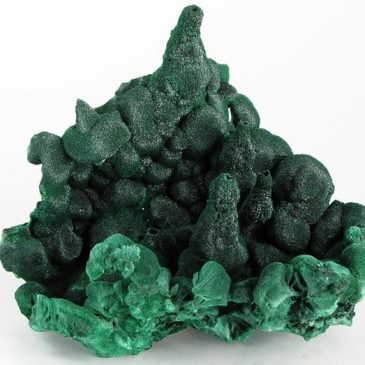
Geographical Locations: Major malachite-producing countries include the Democratic Republic of Congo, Zambia, Russia, Australia, and the United States. Significant deposits are also found in Namibia, Mexico, and Chile.
Geological Formation: Malachite forms in the oxidation zones of copper deposits, often associated with azurite, cuprite, and native copper. It typically occurs in limestone or other carbonate-rich rocks.
USES
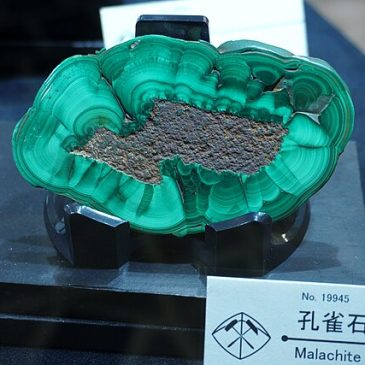
Jewelry: Malachite’s vibrant green color and unique banding make it a popular choice for jewelry. It is commonly cut into cabochons, beads, and inlay pieces for rings, necklaces, and earrings.
Decorative Objects: Malachite is used to create a variety of decorative items, including carvings, boxes, vases, and tabletops. Its distinctive patterns and color make it highly desirable for ornamental purposes.
Pigment: Historically, malachite was ground into a powder and used as a green pigment in paints and cosmetics. Although synthetic pigments have largely replaced natural malachite, it remains a valuable historical pigment in art restoration.
Collecting: Malachite is a favorite among mineral collectors due to its striking appearance and variety of forms. High-quality specimens from famous localities are highly prized.
Metaphysical Uses: In the metaphysical realm, malachite is believed to have various healing properties. It is thought to promote emotional balance, enhance creativity, and protect against negative energies. Malachite is also used in meditation and energy healing practices.
CULTURAL AND SYMBOLISM
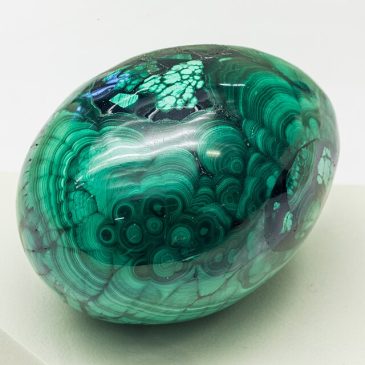
Symbol of Transformation: Malachite is often associated with transformation and growth. Its green color symbolizes nature, life, and renewal.
Historical Usage: The use of malachite in ancient amulets and talismans highlights its cultural significance as a protective stone.
